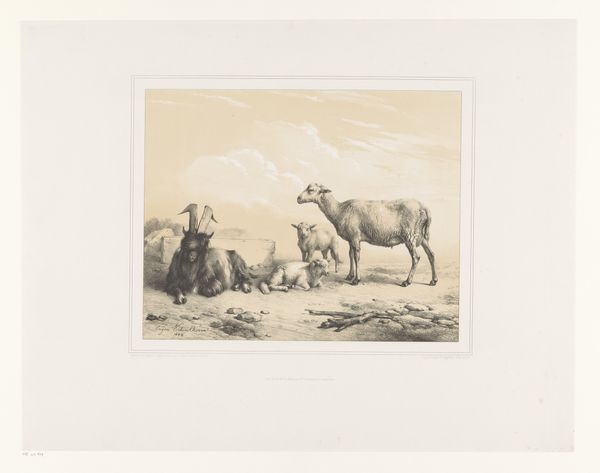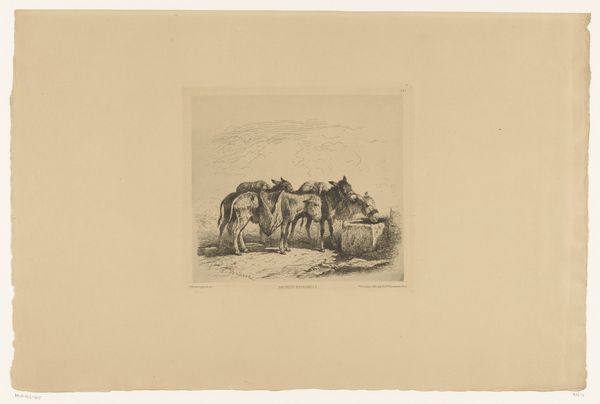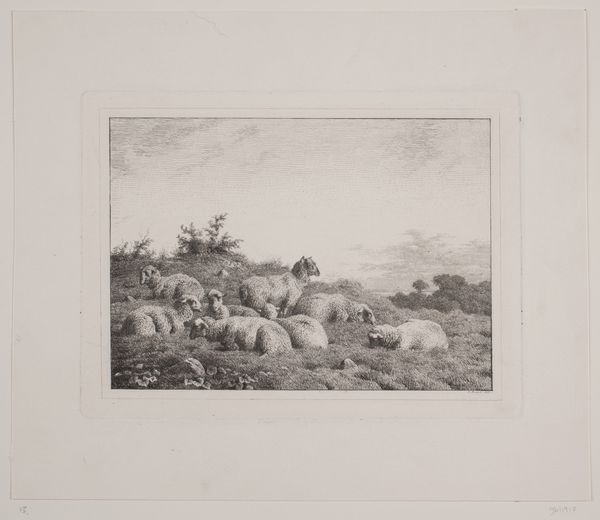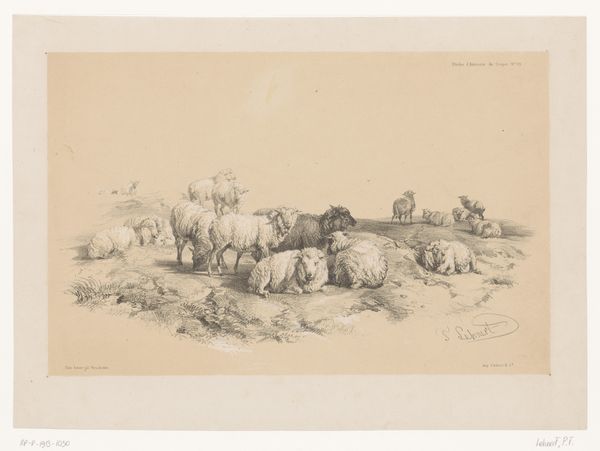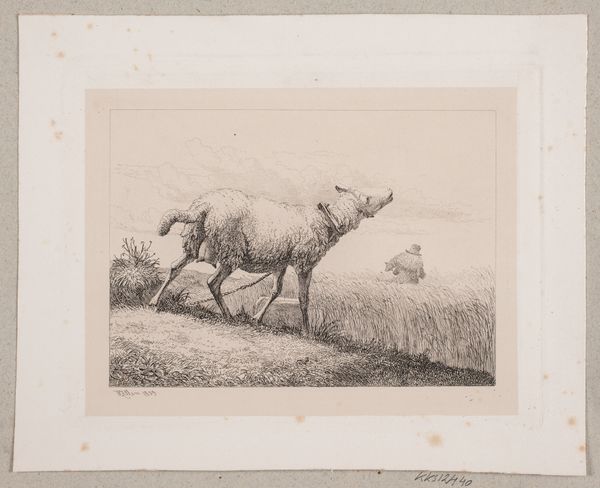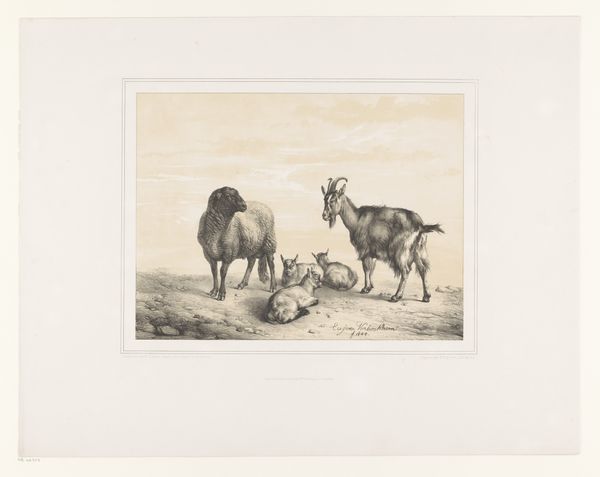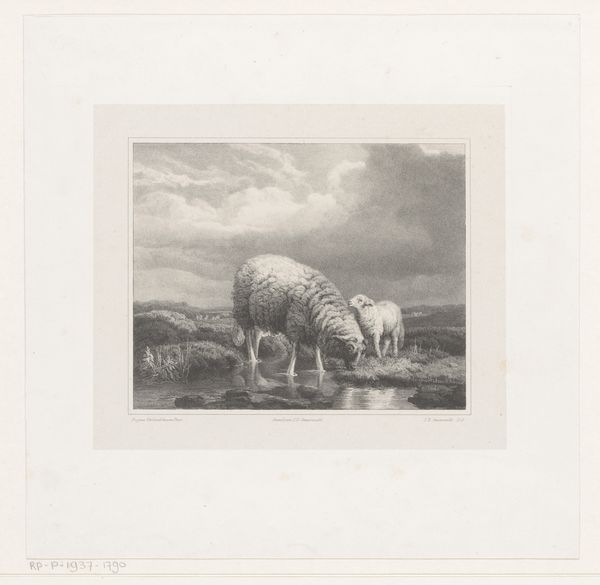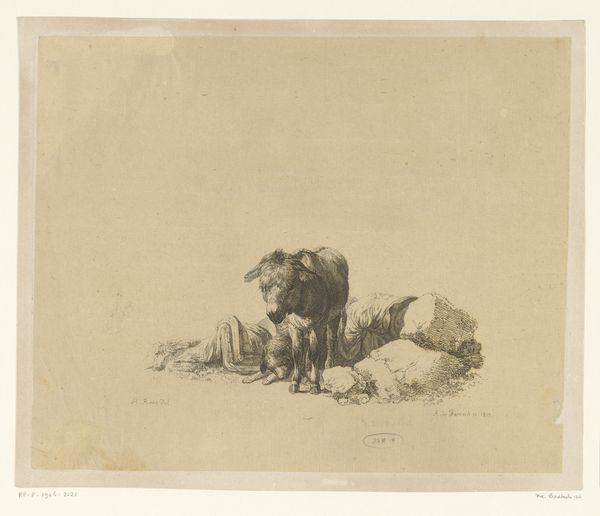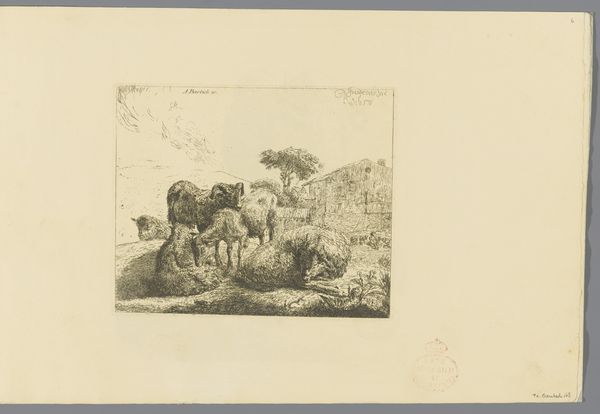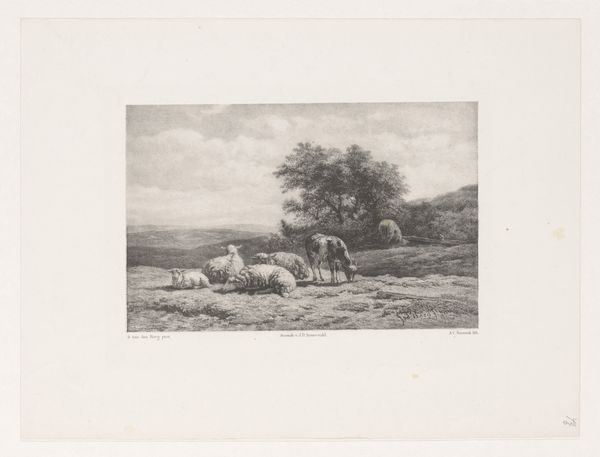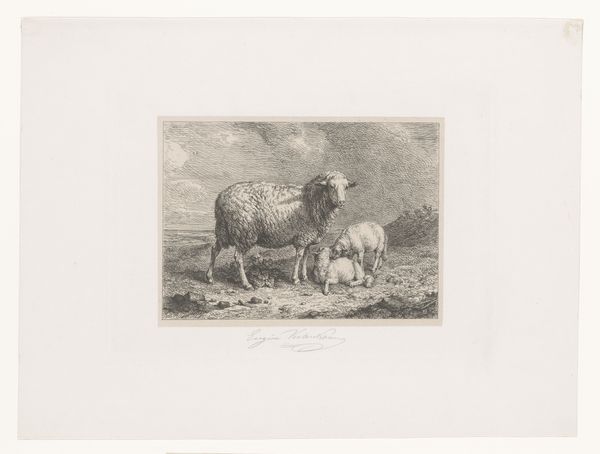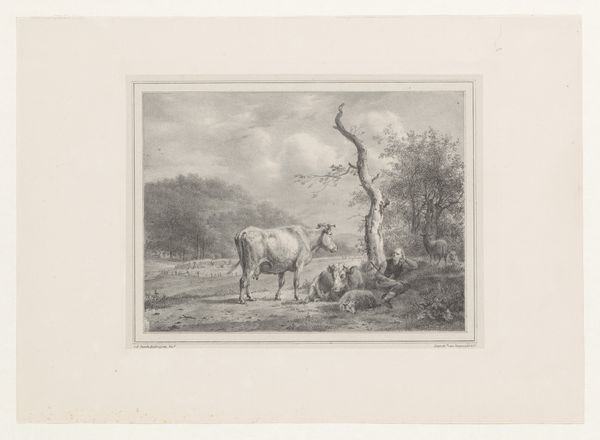
drawing, paper, pencil
#
pencil drawn
#
drawing
#
ink paper printed
#
pencil sketch
#
landscape
#
paper
#
pencil
#
pencil work
#
academic-art
#
realism
Dimensions: height 490 mm, width 625 mm
Copyright: Rijks Museum: Open Domain
Curator: Looking at "Vier schapen," or "Four Sheep," created in 1844 by Eugène Verboeckhoven, a feeling of quiet simplicity washes over me. What's your initial impression? Editor: It’s oddly comforting, like a page torn from a very elaborate storybook. The muted tones of the pencil sketch create a peaceful atmosphere, don’t you think? Like a dream you’re just about to forget. Curator: Precisely! And Verboeckhoven, deeply embedded in the 19th-century artistic milieu, comes from a historical framework defined by evolving ideas around land use and animal husbandry. Representations of animals weren't just aesthetic; they echoed societal relationships to the natural world. Consider the economic value attached to sheep, intrinsically linked to rural class structures, and the symbolism possibly mirroring stability and pastoral idylls in a quickly urbanizing Europe. Editor: Absolutely. He captures a kind of serene domesticity that resonates. There's something very honest and unaffected about them. And you know, considering the socio-political climate, depicting something as straightforward as sheep feels like a radical act of finding peace in the everyday. Does it feel deliberately idyllic? Curator: It's a compelling notion. This work does show how prevailing artistic practices during this period often sidelined working-class experiences and prioritized sentimentalized portraits of farm life. It becomes crucial to investigate how Verboeckhoven’s composition subtly influences our reading, potentially masking labor processes and struggles in the production of wool and sustenance. Editor: Interesting... because while I find a surface level charm and ease, looking again, I see those slightly smudged edges, the deliberate imperfection. That's what pulls me into this piece. Those smudges remind you of being in a field and the wind blowing or a smudge of dirt you can't get rid of from the farm. I suppose the artist could just be adding shadows, though! Curator: Indeed! And I believe situating this within the conversations of land rights, industrial transformation, and class representation encourages us to scrutinize romantic depictions and decode societal narratives behind even the simplest-seeming artworks. Editor: Agreed! Overall, Verboeckhoven's rendering is unexpectedly powerful. He's offering a calm reflection on the quietude and the inherent grace that lives outside. Curator: It's certainly caused us to really dig into what we’re seeing and to think about not just the art itself but its context, as well.
Comments
No comments
Be the first to comment and join the conversation on the ultimate creative platform.
